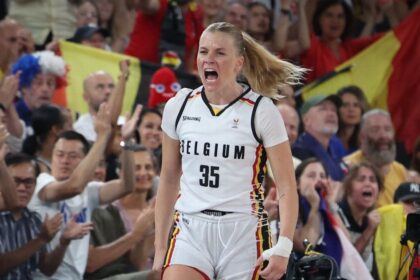Key Negotiations in the WNBA: Salaries, Revenue, and the Future of Women’s Basketball
The 2025 season has come to an end, crowning a new champion. However, attention is now focused on collective bargaining negotiations. The current agreement expires on October 31, and both Commissioner Cathy Engelbert and the WNBA Players Association (WNBPA) are seeking a “transformative” agreement. Despite this, the parties appear to be distanced on the most important issues.Players’ Priorities: Salaries and Revenue Sharing
The increase in salaries is crucial, but the main priority is revenue sharing: how it is determined and whether the percentage can grow during the agreement, instead of a fixed number. WNBPA president Nneka Ogwumike emphasized the need for a revenue percentage that adjusts to the growth of the business.Satou Sabally, a player for the Phoenix Mercury, expressed that a recent proposal from the WNBA does not reflect the league’s growth from the players’ perspective. In contrast to the NBA, where salary caps are based on a percentage of basketball-related income (BRI), the current WNBA agreement sets salary caps annually, with modest increases. The initial agreement, prior to the COVID-19 pandemic, established revenue targets based on the 2019 season, which made it difficult to meet the goals despite the increase in attendance in recent seasons. According to reports, the maximum salary is estimated to be around $850,000, with a minimum for veterans of around $300,000. Players are questioning whether they are receiving their fair share of the league’s growth, considering the increase in the value of the franchises. For example, the Las Vegas Aces, purchased for $2 million in 2021, are now valued at $310 million, while the New York Liberty, valued at $450 million, were acquired for between $10 and $14 million.The players insist on obtaining a percentage of the revenue that grows with the business, which could include team revenue.
Nneka Ogwumike, President of the WNBPA
The arrival of star Caitlin Clark has boosted the league’s growth. If this growth continues, it’s understandable that players are concerned about how their share of the pie will increase. Another important issue is prioritization. In the 2020 agreement, the players agreed to certain restrictions, but they are expected to challenge them in these negotiations. Prioritization has prevented some players from participating in the WNBA for an entire season. Satou Sabally has spoken with athletes from other basketball leagues and other sports about their own labor negotiations. The WNBA’s broadcast rights agreement, valued at $2.2 billion and starting in 2026, is also a significant factor. Players want to ensure they get a fair share of this revenue.There is a possible strike. I promise you we will not play until we get what we deserve.
Sophie Cunningham, Indiana Fever Player

Impact of Criticisms of Engelbert on Negotiations
Commissioner Engelbert was booed by fans during the trophy presentation. This has raised questions about how the strained relationship between Engelbert and the players will affect negotiations. Napheesa Collier, star of the Minnesota Lynx, criticized Engelbert’s leadership, accusing her of negligence and of not adequately addressing issues such as refereeing and player compensation. Engelbert denied Collier’s statements, resulting in a breakdown in the relationship. NBA Commissioner Adam Silver acknowledged the need to repair relationships. Silver and the owners’ support is crucial for Engelbert’s permanence.What Happens if an Agreement Isn’t Reached?
If an agreement isn’t reached before October 31st, it wouldn’t necessarily mean a lockout. However, a work stoppage would be unprecedented in WNBA history. Sophie Cunningham mentioned the possibility of a strike. The league is in a hurry to resolve this, considering the expansion with the Portland Fire and Toronto Tempo for 2026 and the expansion to 18 teams by 2030. Although an out-of-season lockout would be detrimental, the biggest concern is the loss of games. Owners have more at stake now that franchise valuations have increased. Players are determined to reach an agreement on their terms.I don’t think anyone wants to see a lockout. We are not advocating for that. We just want to make sure this is a deal that gets done the right way.
Nneka Ogwumike
Key Dates to Consider
It’s important to note how the WNBA adjusts its offseason event schedule if both parties agree to an extension for collective bargaining negotiations. Here are some dates from last season that could provide insight into what’s to come:- November and December: Expansion draft and draft lottery.
- January to March: Second season of Unrivaled.
- January and February: WNBA free agency.
- April: WNBA Draft and training camp opening.
- May: Start of the WNBA season.






